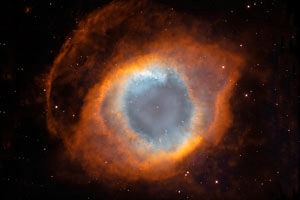Do you think there is a lot of demand for scientific photography today? So I hope you know about photography. But do you know where and how this photography started? Or to put it bluntly, it is said to be the history of scientific photography. Let's learn about the history of this scientific photography.
 |
| First scientific photograph |
Did you know that on January 7, 1839, Louis-Jack-Mande Daguerre, an established artist and chemist in Paris, announced to the French Academy of Sciences that he had perfected a photographic imaging technology that could be widely used and used. | His invention, later dubbed Dagururotype, was based on a special property of the silver iodide: when exposed to light, the molecules transform into a chemical that can turn into a charcoal shade and line when the mercury later develops. The brighter the light, the darker the silver-mark amalgam A sheet of metal copper plated with silver iodide, for a long time faced a road view, a picture of the road was presented as a line and shadow of various radiance on the Dagururotype plate.
Daguer initially thought that his invention would often be suitable for personal use in travel logs, art installations and architectural records. But it was more and more used in scientific research in the nineteenth century, due to its ability to capture natural reality in one moment and preserve it for detailed investigation. Astronomers first accepted this theory; The first images of the sun and solar eclipses were captured on both Dagururotypes in the 1940s. By the end of the nineteenth century, photographic images - a new tool for transferring images from silver-plated glass plates to paper - became the main tool of the scientific trade, and photographic images became more and more popular in scientific journals. Since then, the role of photography in science has only increased
Why do scientists always consider photography so high? Careful observation of evidence is at the heart of modern scientific methods; Photography has always been valued as an objective technique of observation, free from the possibility of human error in the old-fashioned way of sketching experimental observation. As important as it is, it can collect photographic data that cannot be identified or processed by the human eye. Using technology that took the beam's invisible X-ray pathway, for example, in 1952, Rosalyn Franklin was able to reveal the exact structure of the DNA molecules embedded in it - which we now recognize as double helix. At the other end of the special scale, telescopic cameras can record galaxies four billion light-years away from Earth, such as these images from NASA's Moon X-ray Observatory. And photography can “slow down” events that are usually too early for the eye. In 787878, for example, a revolutionary public photographer on a horse from Edward Muebridge resolved a long dispute over whether the four legs of a horse were off the ground at the same time. In the 1950s, MIT physicist Harold Edgerton used a strobe light flash to create a striking image of an accurate bullet passing through an Apple bullet, sprinkled a drop of milk in a glass, and a hummingbird wing.
These discoveries describe a fundamental structural framework: technological advances in optics, cameras, and light, and scientific advancement and discovery. A recent example of this movement includes digital cameras A computerized camera developed in the early 1st century that uses a light-sensitive electronic chip called a charge-coupled device (CCD), the electromagnetically charged (electronically charged) and the electronically charged (electronically charged) most of the time. Did Time Scientists quickly realized that they could capture images in very dark conditions, using CCTV cameras to record shapes and structures inside a bi-bi-tissue or under a microscope lens.
Today, scientists and engineers continue to work together to develop more powerful scientific scientific imaging technology, such as functional magnetic resonance imaging (fMRI), which is used to track brain activity. AFM), which uses reflective laser beams to map small, complex surfaces of the combined carbon atom in nanometers. Science and photography stories must be involved in the 21st century. In this spotlight, we invite you to learn about the forms of photography that contribute to the advancement of state-of-the-art scientific knowledge.
I hope you have any doubts about the history of this scientific photography or you can also comment or contact us to find out more.




No comments:
Post a Comment